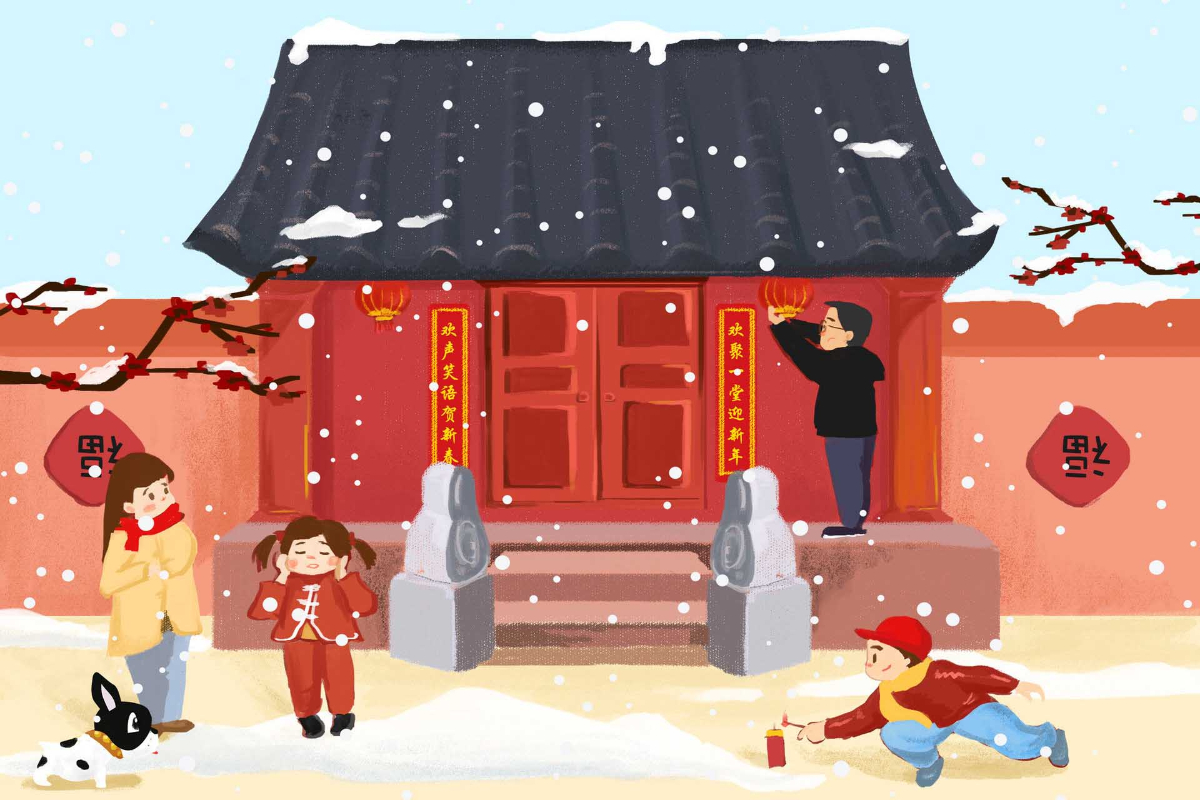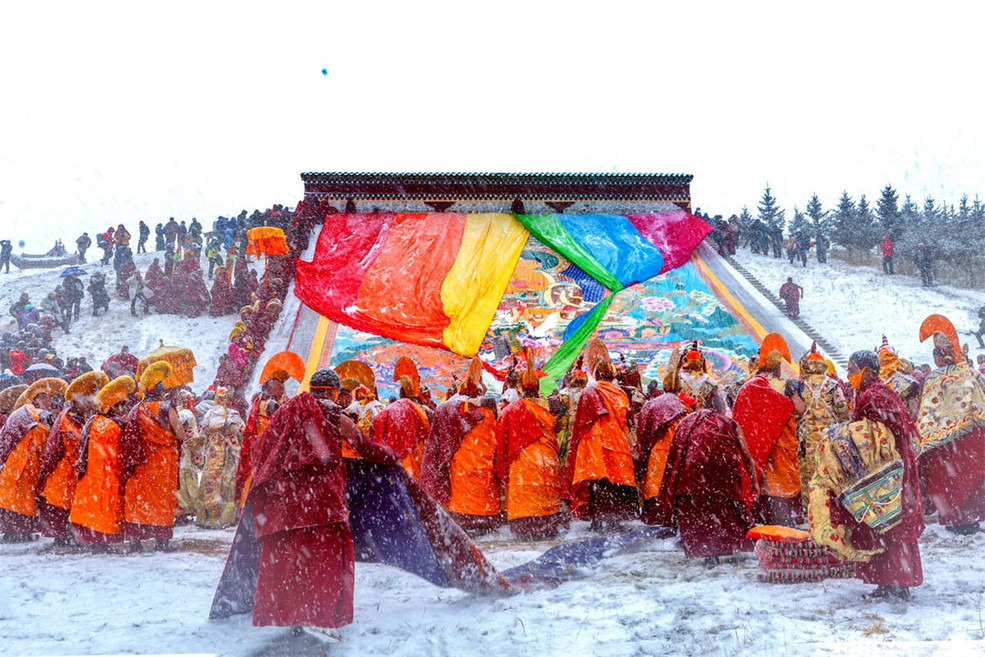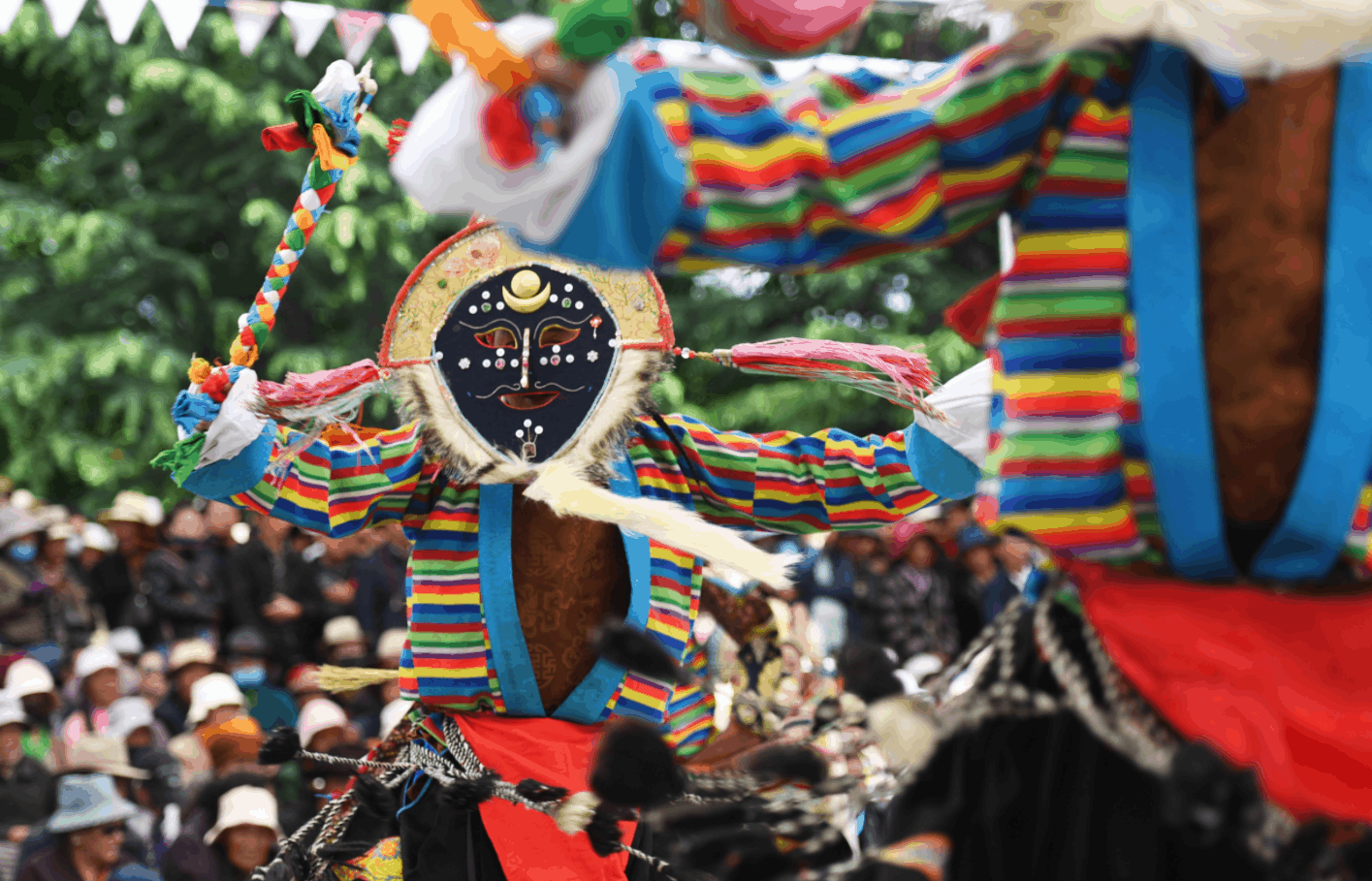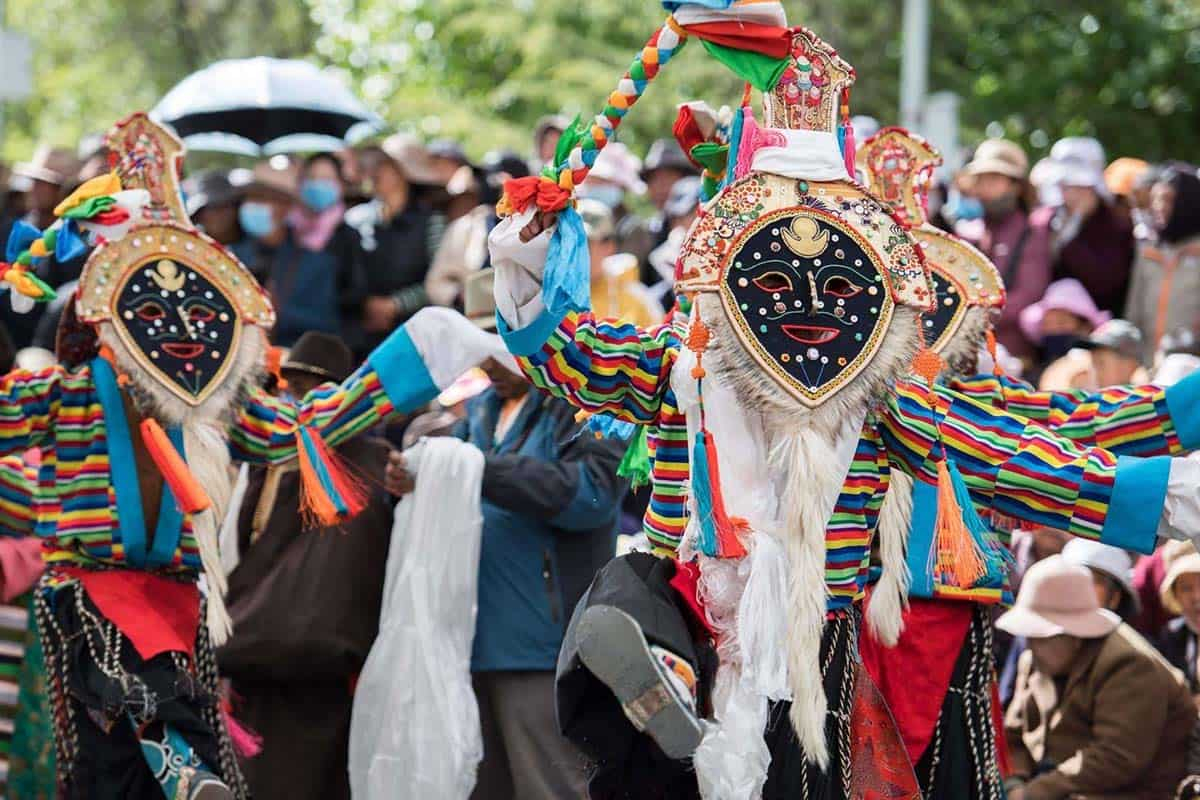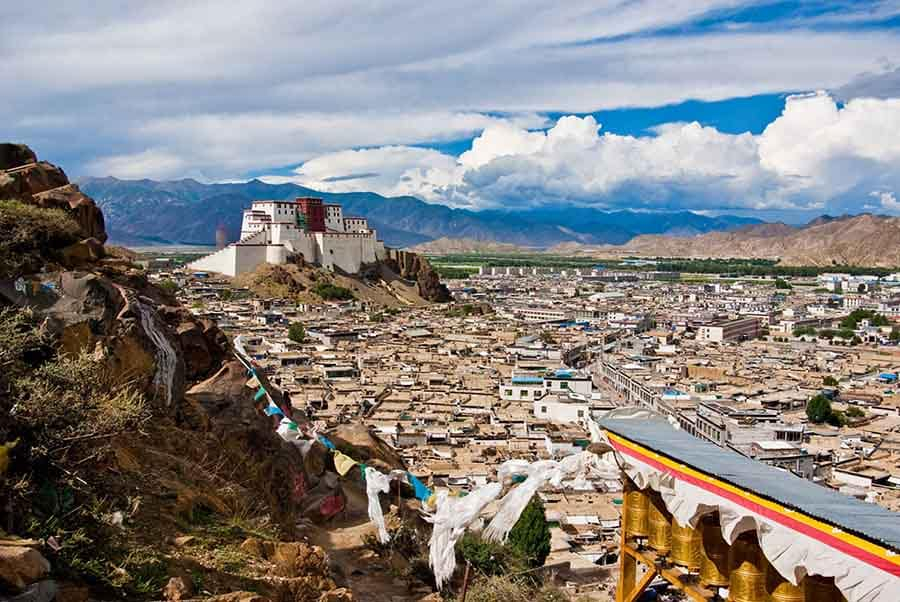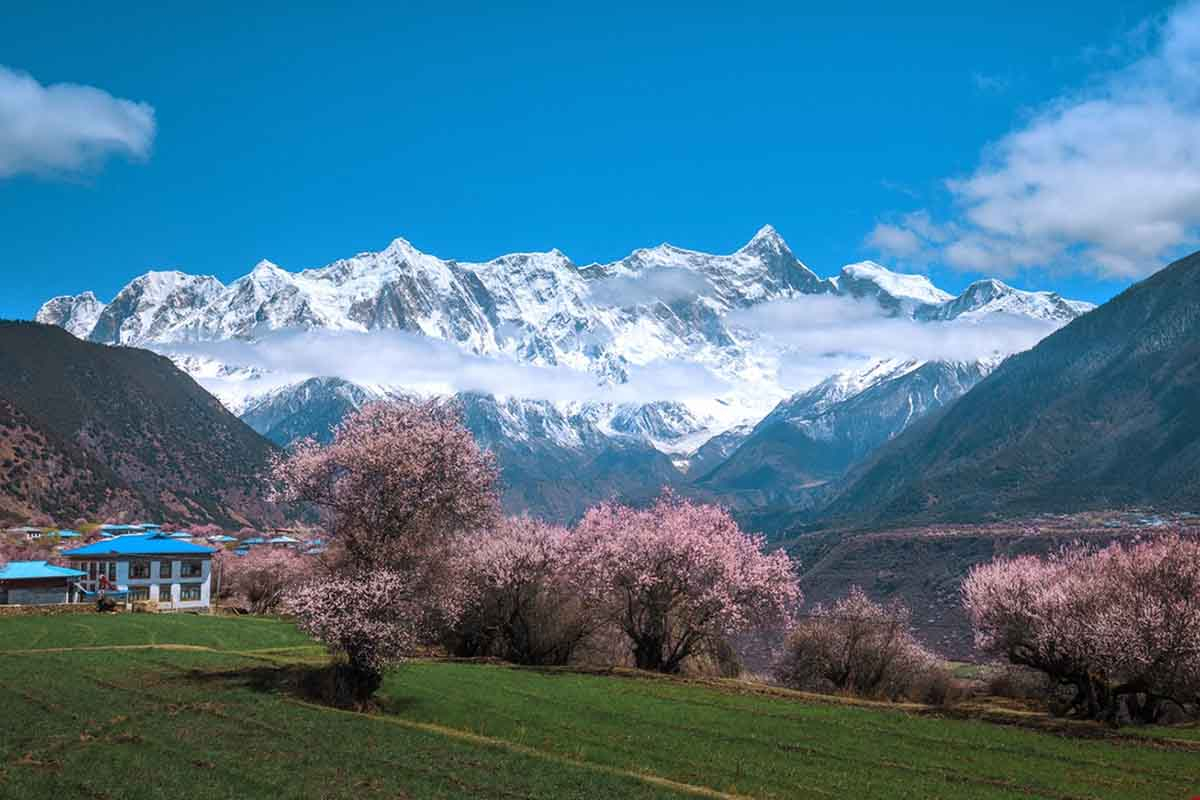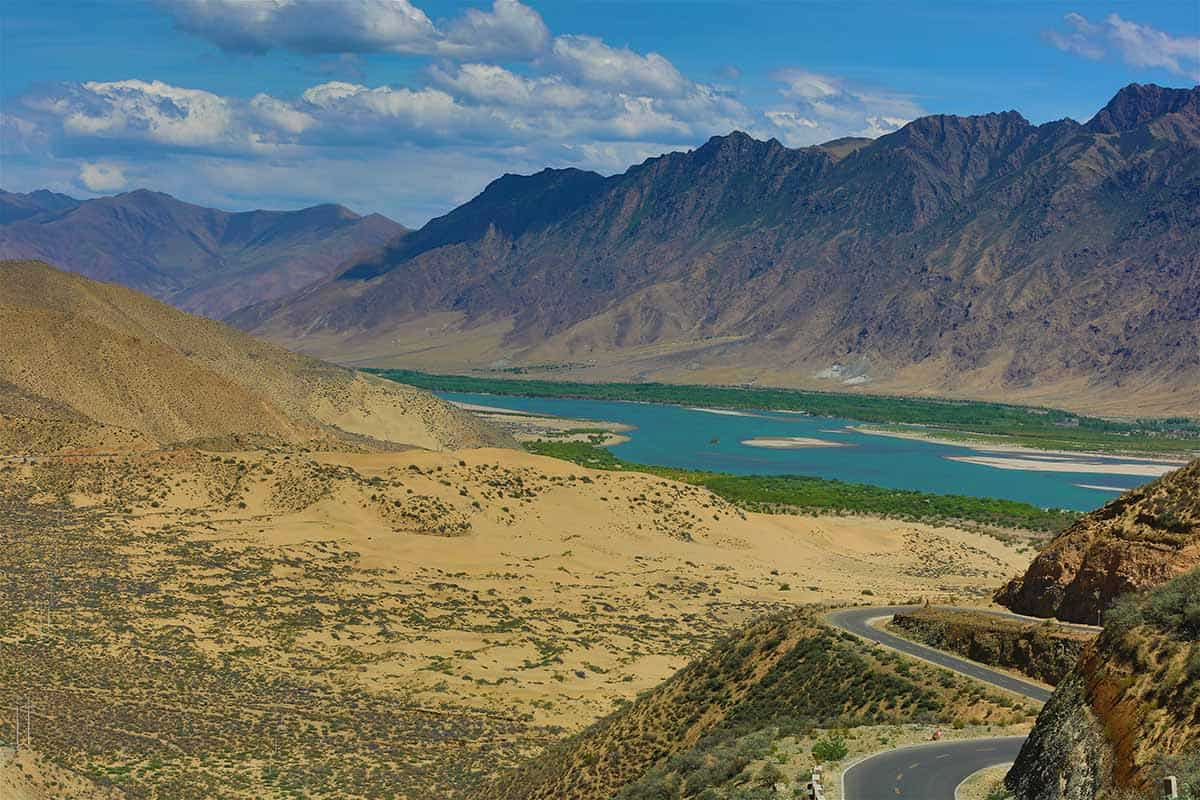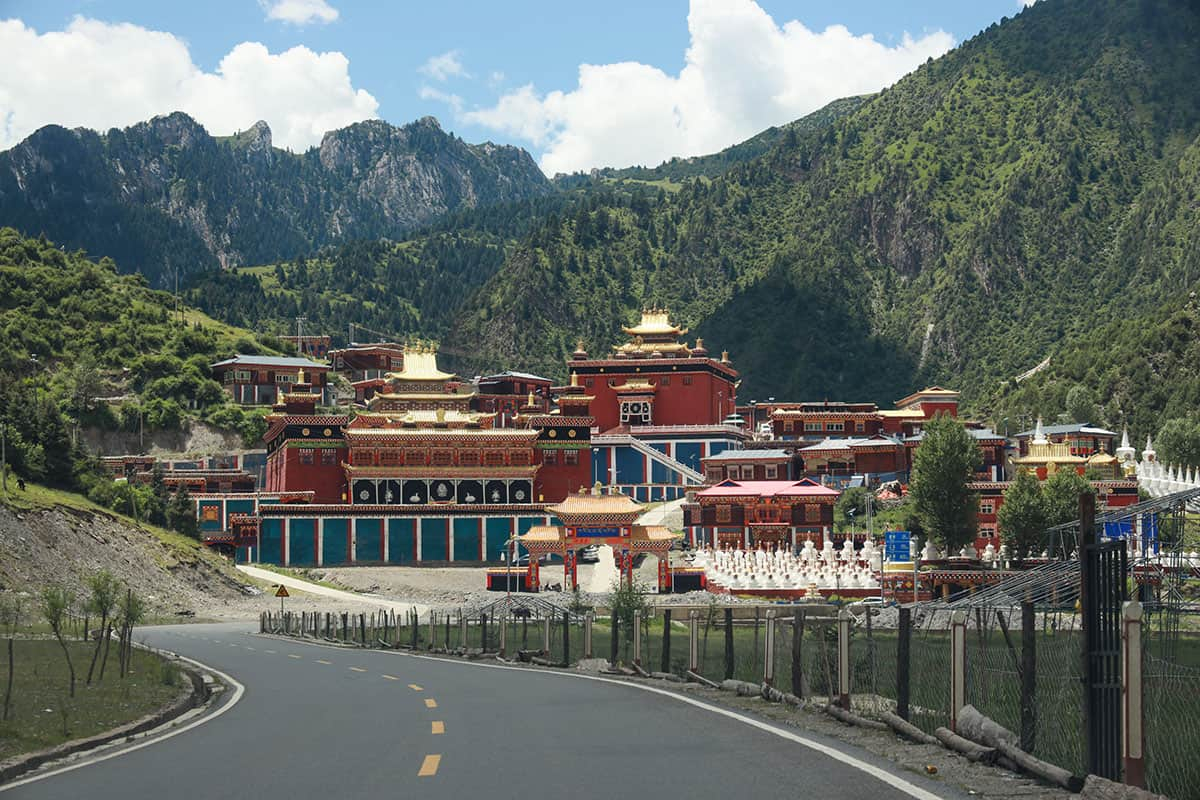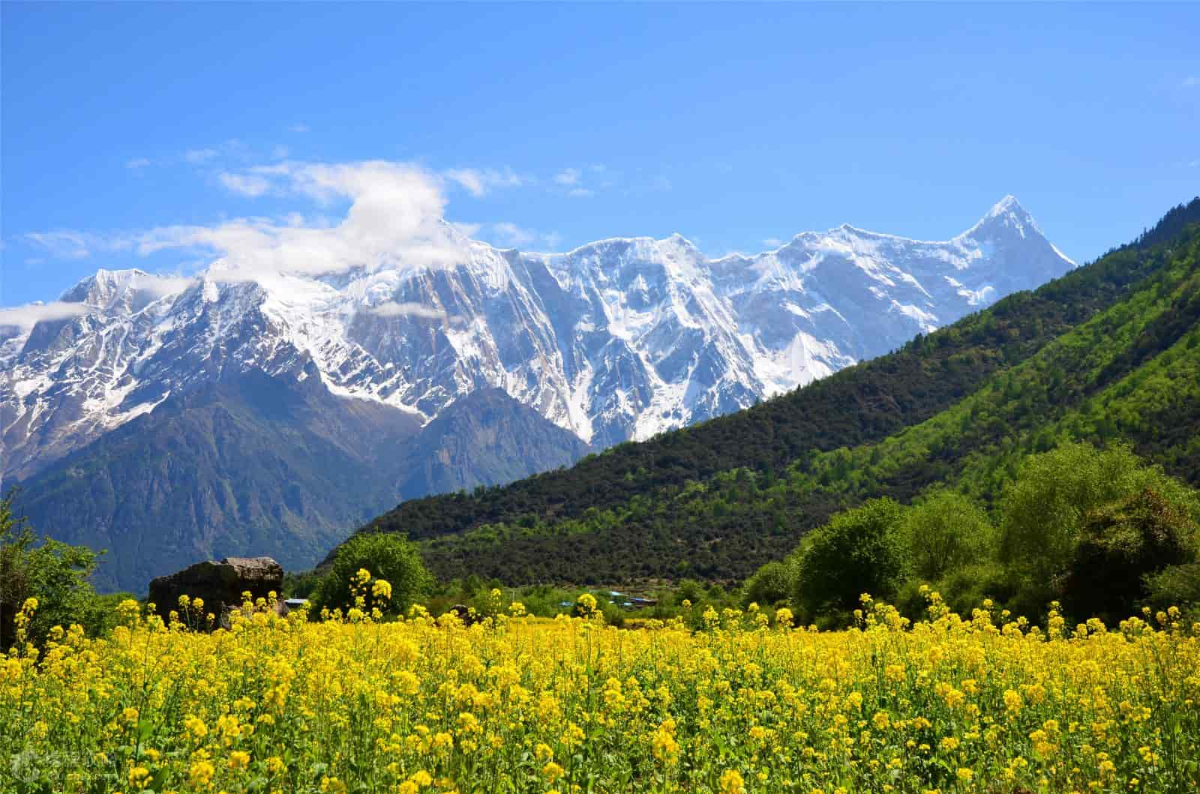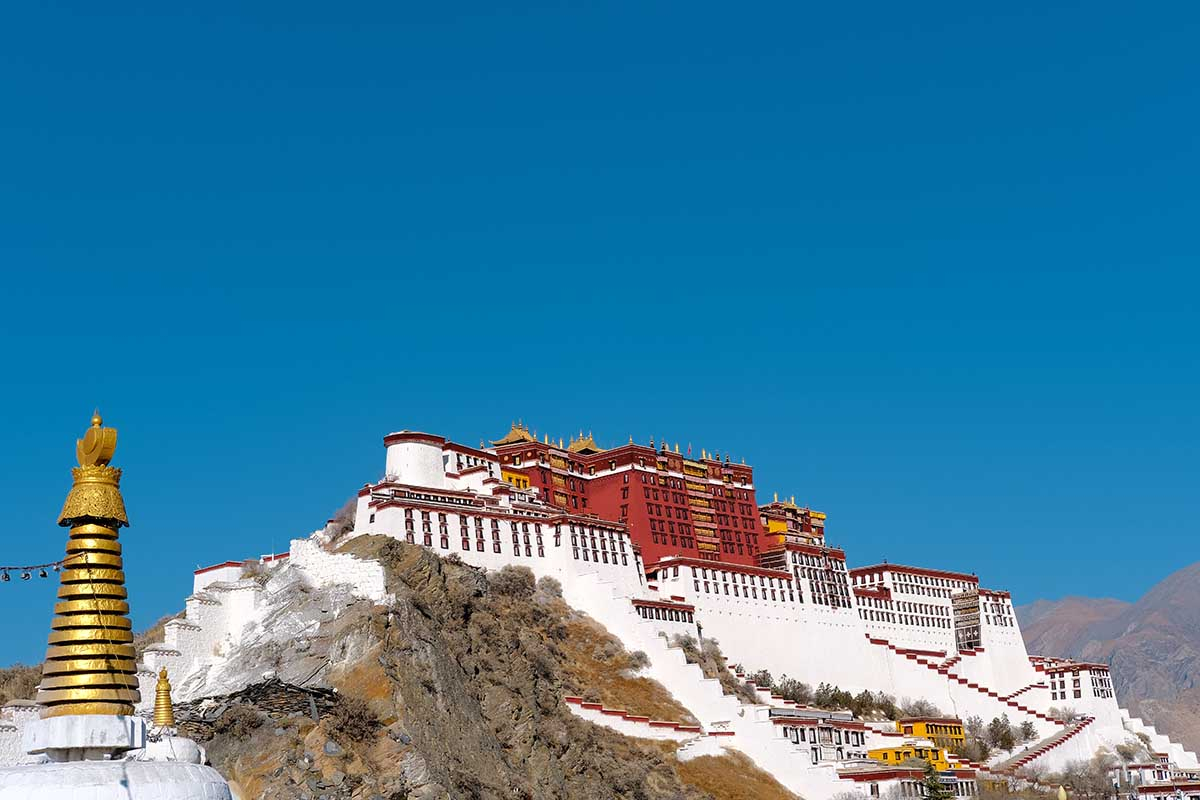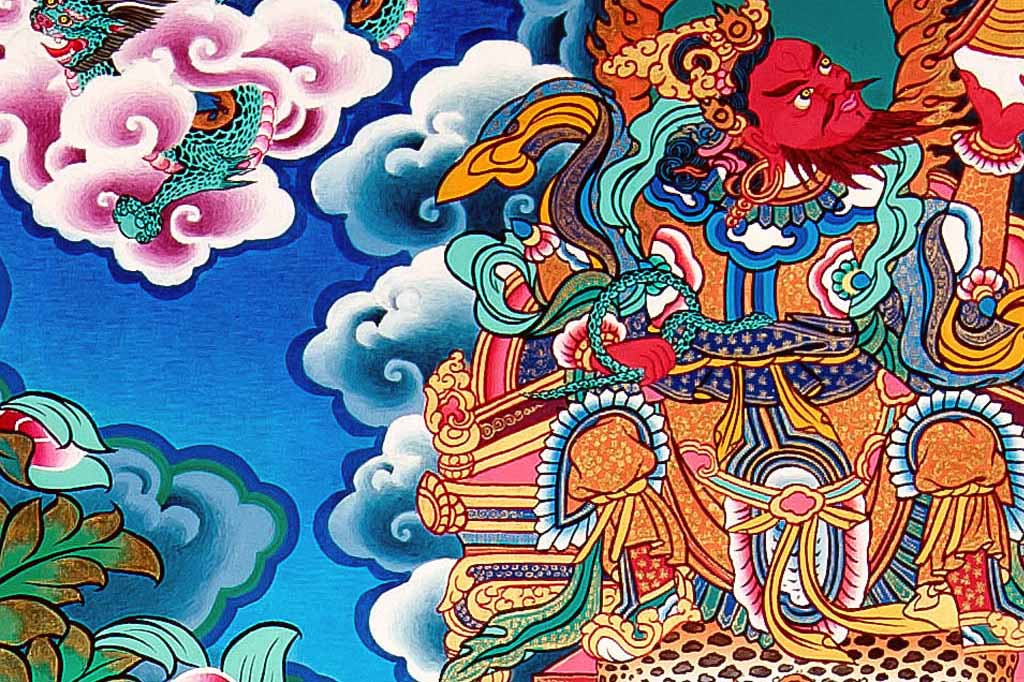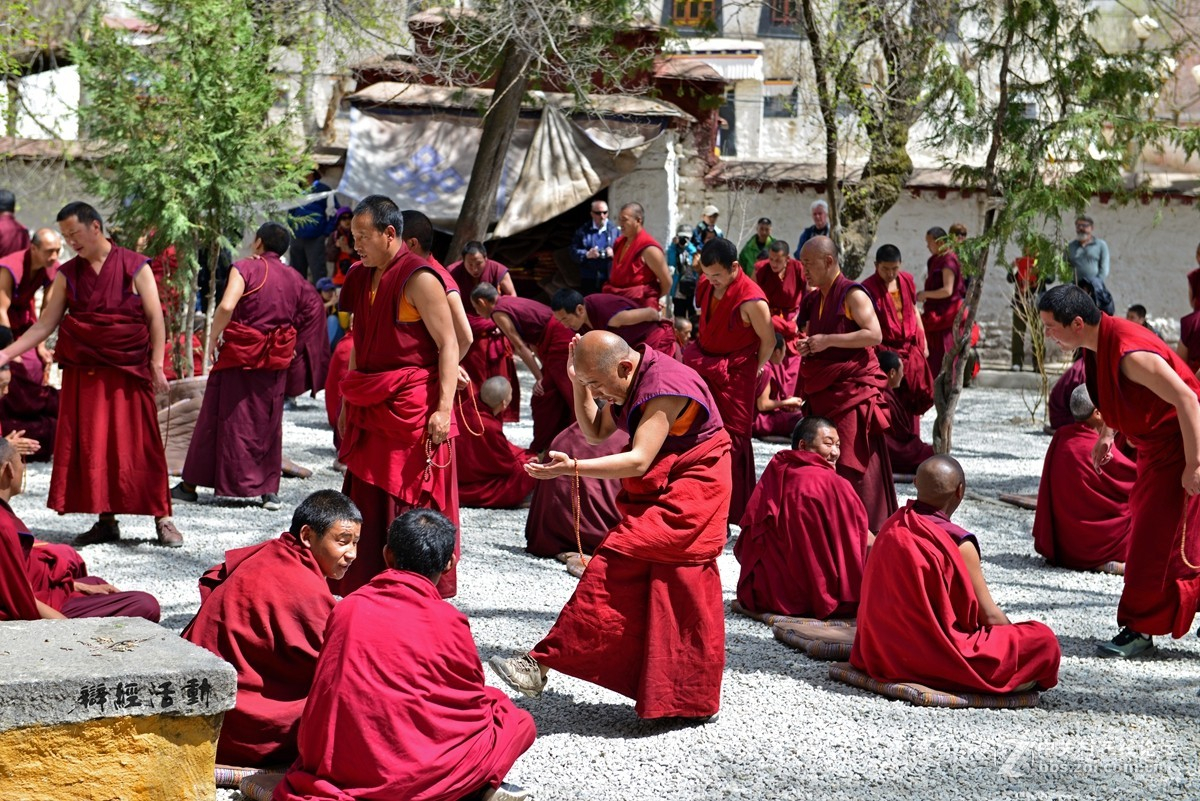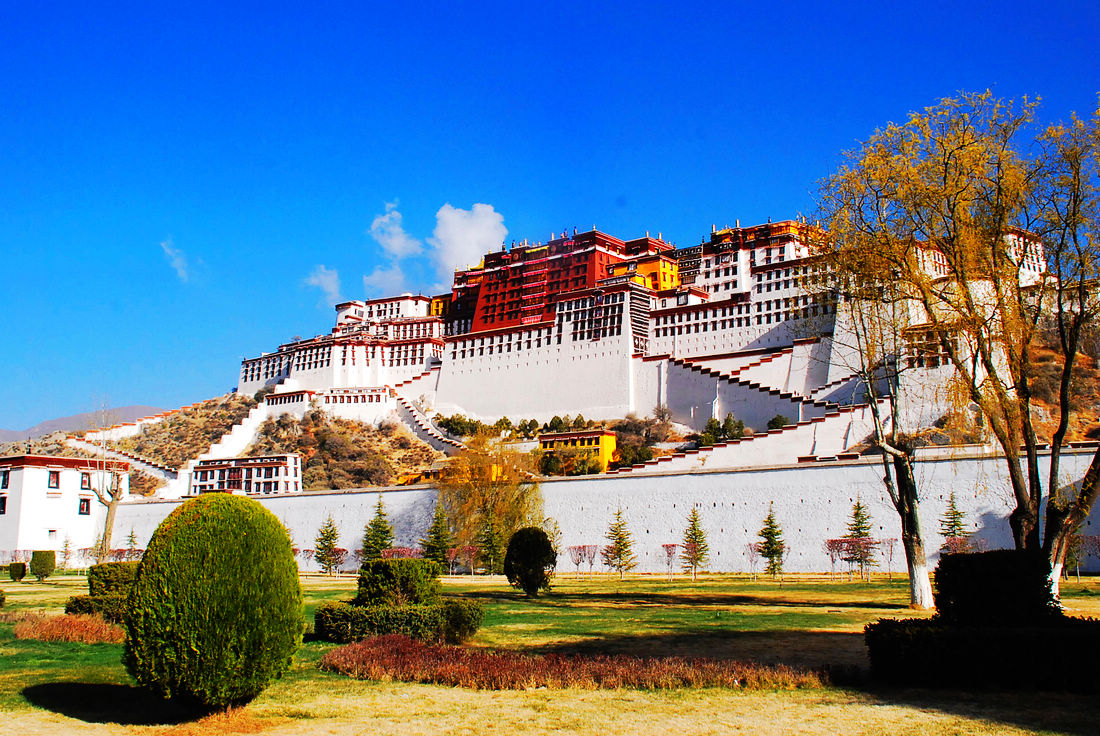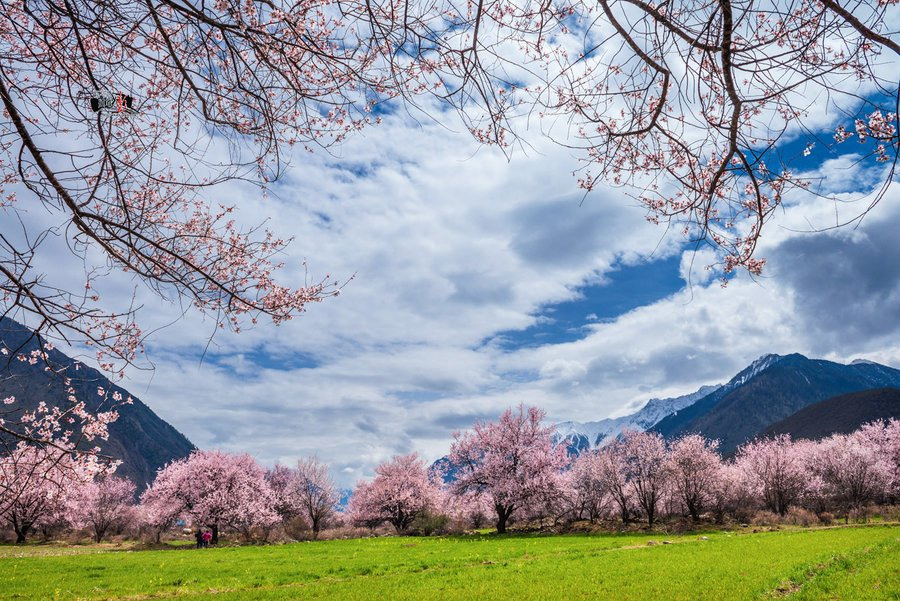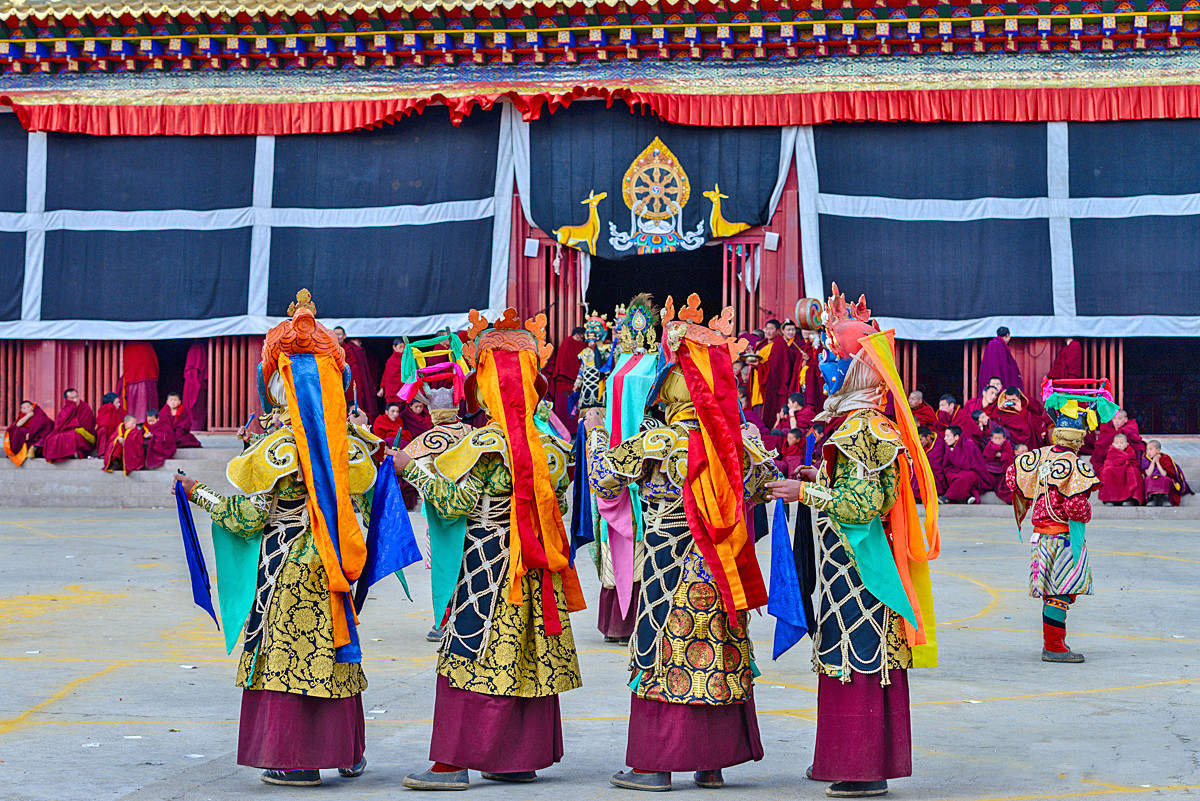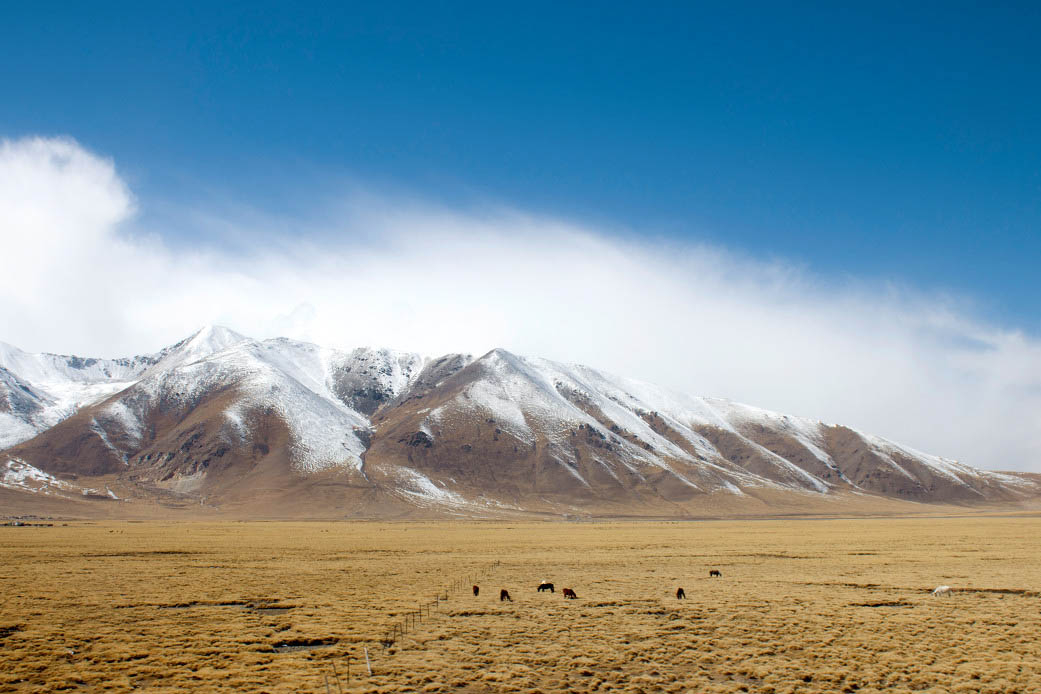Tibet Sho Dun Festival (Yoghurt Festival)

The Sho Dun Festival , commonly known as the Yogurt Festival or Banquet is an annual festival held at Norbulingka or "Jewel Park" palace in Lhasa, Tibet Autonomous Region.
This traditional Tibetan festival is usually celebrated at the end of June or early July in the Tibetan calendar, which is a kind of almanac created by Tibetans with a history of 1300 years and much different from the Gregorian calendar and Chinese lunar calendar. In the Tibetan language, the "Sho Dun Festival" means "a special day to eat yogurt", thus it is also called "Yogurt Festival" or "Yogurt Banquet". Sho Don Festival originated in the 11th century. It was exclusively a religious observance until the 17th century when the Great 5th Dalai Lama introduced Tibetan opera into the celebration, making it a nationwide gala.
The celebration of Shoton festival starts on 29th day of the 6th Tibetan month according to the Lunar Calendar. In 2020, the first day of the festival falls on August 19.
The festival is very popular among Tibetans. On that day, thousands of Tibetan people gather at Drepung monastery. Most of Tibetans wear traditional dress and colorful jewelry and decorations. On the first day you can see the large Thangka display in Drepung and Sera monastery, as well as Opera dance in Norbulingka park. After that, Tibetan continue to celebrate for a week.
The festival mainly consists of three parts – the Great Buddha Display, Tibetan Opera Show and Horsemanship & Yak Race Show.
During Tibetan Sho Dun Festival in Lhasa, Tibetan opera competitions take place at Historic Ensemble of the Potala Palace and Zongjiao Lukang park every day, attracting local residents and tourists from home and abroad.The beautiful grounds of the Norbulingka are filled with partying groups shielded from the wind by gaily coloured hanging walls of rugs and printed canvas. There is much feasting and visiting between family groups and bonfires are common at night.
Giant Buddha Display
The 500-square-meter (598-square-yard) large Great Buddha Display on the hillside back to the Drepung Monastery is the prelude to the festival, in order to get a better position to view the unveiling of the Great Buddha, some Tibetan people wake up as early as 2 or 3 A.M. to rush to the monastery. You will find people jostling each other in the crowd even you have been there at 5 A.M., and the whole mountain will be fully dotted with people before the daybreak.
About 7 A.M., along with the sutra horns blaring though the valley, the 20 meters long folded Buddha in the monastery will be carried by scores of the strongest lamas all the way to the big platform built along the hillside for unveil and display.
At 8:00 A.M., as the sutra horn and scripture reciting goes on, a huge figure of Sakyamuni embroidered in color is gradually unfolded; at the same time, the first light, blazing through the morning mist, shines on the Great Buddha, which is called the combination of deities and mankind. Then followers will start worship and present Khada to the Great Buddha, and touch the Great Buddha by the forehead to show devotion, praying for safety, happiness and fortune.
This ceremony is known as the Great Buddha Display which marks the beginning of the annual Tibetan Shoton Festival.
After visiting Drepung, pilgrims rush to Sera monastery to view another giant Thangka display. Monks of Sera monastery start unveiling the Thangka later in the day, so that pilgrims can visit both places. If you stay longer in Sera monastery complex you can see how Thangka is rolled back up and monks carry it away.
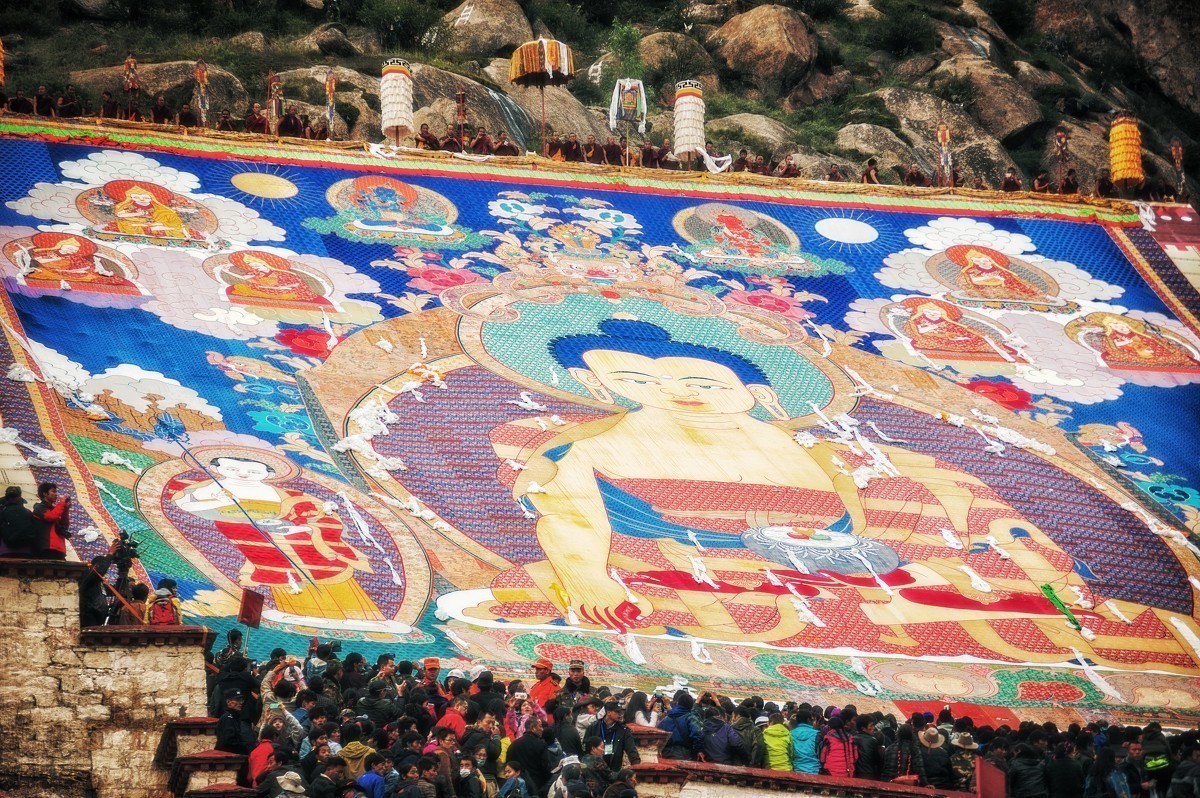
Tibetan Opera Show
Tibetan opera is known as Lhamo or Ache Lhamo in Tibetan. It's the an essence of Tibetan culture. From 10 A.M. on the same day, the best Tibetan Opera troupes from Lhasa, Shigatse and Shannan will gather around at the Norbulingka Park to perform operas, the Norbulingka Park used to be the Summer Palace from the 7th Dalai Lama. The opera show lasts 7 days, but only 8 of the most classical and popular operas will be performed alternately, such as Princess Wenchen, Prince Norsang, Trowa Sonam, Maiden Langsa and etc.
The cultural wisdom of Tibetan for thousands of year and clearly reflected in the Tibetan opera. Many Tibetologist consider Tibetan opera as the living fossil of Tibetan culture.
All the performance of the Tibetan Opera is base on some ancient Indian Buddhist folk tales. The Opera of Princess Wencheng is also base on the historical. Another reason for his troupe to travel far and wide is to spread the teaching of Lord Buddha in the form of entertainment. Most of the stories of the performance are hard work and struggle of the good people and ultimate triumph of the good over the evil. Right now there are nine major traditional Tibetan Opera.
The procedure and the performance style has not changed much since the 14th century. Nowadays, we follow the same opening rituals are enacted before the commencement of every performance, authentic costumes are worn, singing, dance, and musical tradition are strictly adhered to.

Horsemanship and Yak Race Show
The other must-see activity at the event is the Horsemanship and Yak Race Show, which is often held on the morning of the second day. Different from some international competitions, the horsemanship show is very Tibetan. Audiences watch as six riders standing on horseback form a pyramid and race around the grounds. While the horsemanship show is thrilling, the yak race tends to be more relaxing and amusing because when the whistle blows and the game starts some yaks just decide not to move no matter what their rides do, while others choose to run around aimlessly.
Of course the Yoghurt Banquet wouldn't be complete without snacking on Tibetan yoghurt, which is made from Yak milk. Other traditional food and drink at the festival also includes tsampa (roasted barley flour), butter tea and barley wine.

You Might Like
- HOTEST
- RECOMMEND

